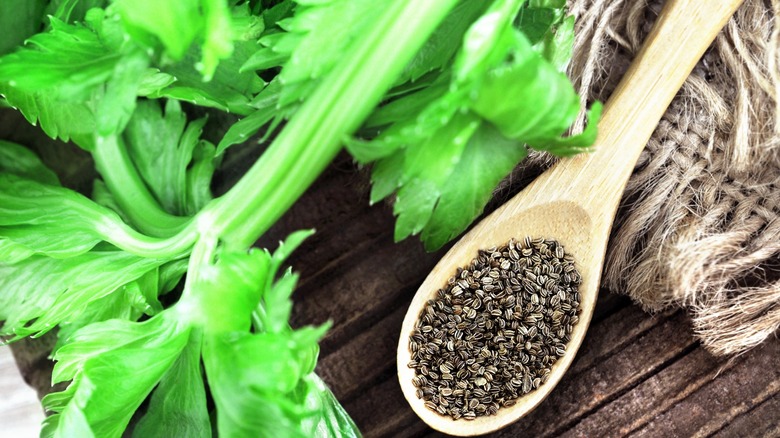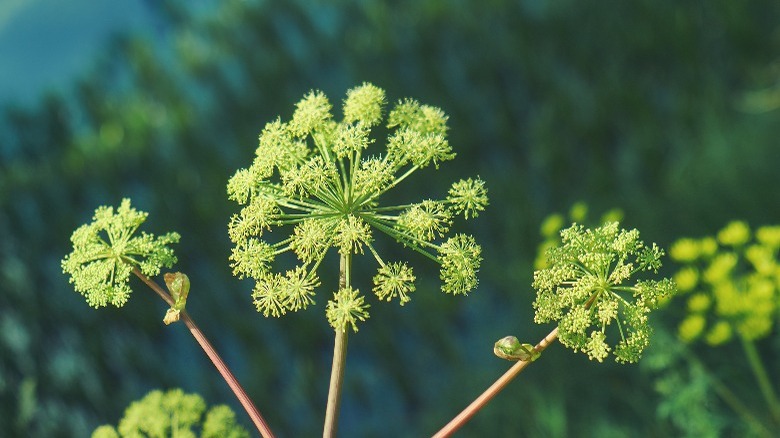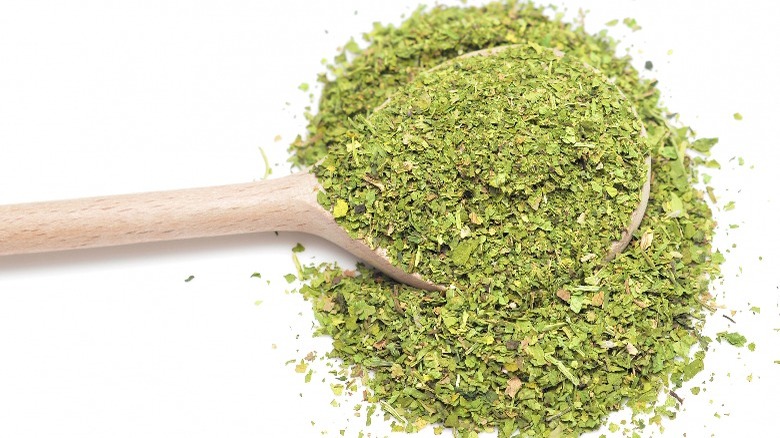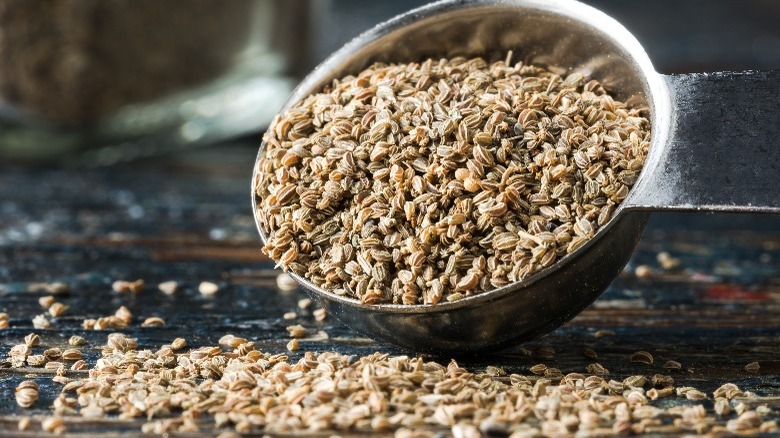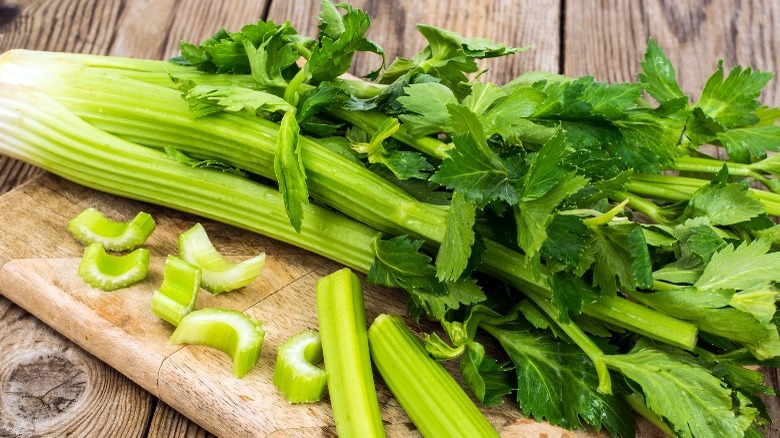What Can You Use Celery Seeds For?
Is celery seed the unsung hero of the spice cabinet? Probably not. It doesn't even appear on most "must-have" spice lists. In fact, though it makes a frequent guest appearance on everything from salad dressings to lobster rolls, celery seed can hardly be considered a staple. Instead, this savory seed is easily ignored in the back recesses of the spice cupboard, keeping company with your cream of tartar. But if you've never really used celery seed before, don't be deterred. While celery seed's key role is traditionally a supportive and foundational one (just like a regular stalk of celery), the full versatility of this handy companion is so much more.
Maybe you've recently seen a video on the alleged health benefits of celery seeds and decided to try and work the spice into your diet more frequently. Or maybe you're excited to dust off your hidden jar of celery seeds because it's the secret ingredient in that new trendy recipe for spicy buttermilk fried chicken. Whatever the reason for digging through your spice cupboard for this often-forgotten savory, you might want to ditch your old jar for a new one. (Keep in mind that if a spice has lost its scent, it's probably no good, as a spice with no odor is one with no flavor.) So, hold on to your spice rack because you're about to receive a primer on the virtues and applications of this under-appreciated spice.
What are celery seeds?
Celery seeds are harvested from wild celery (also called smallage), which is native to the Meditteranean region. They boast a flavor similar to, but stronger than, the commercial supermarket variety that we all know and love (and sometimes secretly loathe). "The seeds pack a strong punch of slightly bitter, warm celery flavor and should be used sparingly," states Cook's Country.
As a spice, celery seeds are available as whole dried seeds, which are tiny (roughly the size of a poppy seed) and a dark shade of brown, as well as ground into a powder where they take on a greenish hue. Which one you should use depends on whether or not you want to add a bit of texture to your dish as a derivative of celery (Apium graveolens).
A member of the parsley family (Apiaceae), celery seed can be used as a substitute for conventional celery in some of its most traditional uses. If you want to impart celery's flavor without the stringiness or chunks, try using celery seed in your next stuffing, or soup base in place of a traditional French mirepoix (in tandem with carrots and onion) or in the Cajun "holy trinity" (alongside green pepper and onion).
Celery seed versus salt versus flakes
Easy to confuse, celery seed differs from celery salt in that celery seed consists of just the seeds (ground or whole), whereas celery salt has a 2:1 blend of salt to celery seed. If you're in a pinch, celery salt (the first ingredient in Old Bay seasoning) can be used in place of celery seed, just be sure to adjust the amount of salt in the recipe accordingly, and vice versa if you're subbing celery seed for celery salt. The much harder-to-confuse celery flakes are made up of the dehydrated stalks and leaves of fresh celery, which can be used interchangeably with celery seed or also to substitute for raw celery.
While dried celery flakes are a perfect substitution for the flavor (without the extra sodium that celery salt brings), you'll miss out on the crunchy textural elements that fresh celery and its diminutive seeds bring to your favorite recipes. Bottom line: Celery flakes are not the move if you want texture. That said, if you're not particularly hung up on the mouthfeel and you just want to magnify the impact of the taste of your celery seeds, you can start by purchasing whole seeds and grinding them down for use right before cooking to maximize flavor.
What else can I use celery seed in?
In addition to creating an aromatic, umami-rich base for soups, celery seed is a popular ingredient in picnic salads such as potato, coleslaw, and macaroni salads. It's also found in sauerkraut, barbecue sauces, vinaigrettes, homemade ketchup, and smoothies. It's sprinkled lightly on deviled eggs, grilled shrimp, and even Chicago-style hot dogs (in its celery salt form). Whole celery seeds lend texture and flavor to spice rubs and marinades, pickled vegetable brines, and salads and is a classic topper in Bloody Mary cocktails.
It's also been used as a tea adding hot water to freshly ground seeds. While such an infusion has been touted for its potential health benefits, Mount Sinai Health Systems states that science doesn't support those claims in human trials. If you choose to drink celery seed tea, either for the flavor or those purported benefits, just be sure to check in with your doctor first, as volatile compounds within this little seed can have very serious health consequences, including dangerous interactions with certain medications. Mount Sinai Health Systems in New York also cautions that children under the age of 18, pregnant women, and those with active kidney inflammation, low blood pressure, and certain allergies should not take celery seeds without the direction or care of a qualified medical provider. The system also notes that chemicals in celery seeds can cause increased photosensitivity, escalating potential damage from UV rays.
Celery seeds: substitutes and storage
No celery seed or celery salt on hand? You can substitute 2 tablespoons of minced celery tops for every ½ teaspoon of celery seeds. Or try subbing dill seeds, fennel seeds, or caraway seeds (all members of the parsley family). Although coriander is also in the parsley family, its important to note that its flavor profile is very different (prominent and citrusy) from celery seed, so if you're subbing coriander seeds for celery seeds to keep the textural crunch, make certain these notes will work well within your dish.
Just like most other spices, celery seed retains peak freshness when kept in a cool, dry place. Even out of the line of direct sunlight, this sensitive seed can still lose its flavor over time, so be sure to replace it before you hit the year mark. In fact, most ground spices don't even last that long — just about six months. Now that you know the versatility and wonders of this little workhorse, how will you use celery seed the next time you cook?
